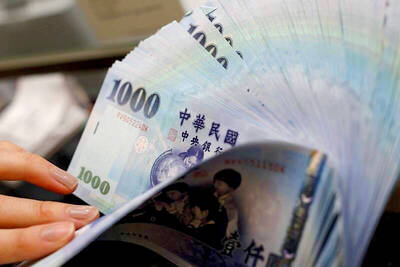Ryusho Soeda, 66, has taken on a job for which his career as a Buddhist priest never prepared him: forensic accounting.
Soeda’s temple is the 1,200-year-old Koyasan, a World Heritage site deep in the mountains of western Japan and long prized as a haven for quiet contemplation. However, in recent months monks here have been debating a very worldly question: How did a complex bet on the yen go so horribly wrong?
Soeda, who was picked to head Koyasan last month June after his predecessor was forced out, has promised a full accounting of the temple’s losses, which at one point last year threatened to wipe out half of its endowment.
“My duty is to find out exactly what has happened and to publish it. Just like Greece published its window-dressing only after they had a new government, the truth will not come to the light unless you change the power,” Soeda said.
The financial crisis at Koyasan is an example of an overhang of losses that cash-rich Japanese religious groups, schools, small firms and wealthy individuals are facing — and in some cases fighting in court — because of financial derivatives tied to the yen.
CURRENCY DERIVATIVES
Fujita Health University, which runs one of Japan’s biggest hospitals, lost US$240 million on currency derivatives. Nanzan University in Nagoya said this year it had lost more than US$230 million. Both schools took their losses from derivatives that were sold to them in the unsupervised, over-the-counter market. In many other cases, the losses have been driven by a product called a “power-reverse dual currency bond” (PRDC), a derivative marketed heavily to non-profit investors in Japan.
The losses highlight a problem Japanese Prime Minister Shinzo Abe has vowed to address: The nation’s long-running economic slump has left its massive savings stranded in dead-end investments and left investors desperate for yield.
Abe has pledged to revive the world’s third-largest economy and foster growth that can outstrip renewed inflation of 2 percent, but doing so will also mean driving a change in mindset by Japanese investors and driving home the message that risk follows return.
PRDC offered a higher return at a time when the yield on 10-year Japanese government bonds was stranded at less than 1 percent. Their popularity peaked in 2006 and 2007, just before the onset of the global financial crisis.
Kansai University economics professor Yoshio Yoshimoto said many universities jumped without reading the fine print.
“One might wonder whether these schools should teach economics to students in the first place’” he said.
Non-profits in Japan are not required to mark losses to market. Partly as a result, total losses from derivative bets gone bad are hard to estimate. However, in one indication of the extent of the problem, there are about 300 ongoing lawsuits over such losses, said Akiyoshi Motosugi, a lawyer in Tokyo. Most claim that the risks of the derivatives were not fully explained by the banks that sold them.
One of those is by Komazawa University, a Buddhist-affiliated school in Tokyo. The university lost US$160 million in 2008 on currency derivatives purchased from Deutsche, BNP Paribas and UBS.
Deutsche and BNP Paribas declined to comment. UBS said it was contesting the claim.
KNOCKOUT CLAUSE
PRDC bonds were often structured to carry a high coupon for the first year. After that the coupon was determined by the rate of the yen. A knockout clause was typically set so that the bonds would be redeemed if the yen weakened past a certain threshold against the US dollar or the Australian dollar.
That meant the investors accepted the risk of no interest payments if the yen were to strengthen — as it did from late 2007 to late last year. The knockout clause capped upside.
Many of the bonds were issued in London’s unregulated offshore eurobond market. According to Thomson Reuters data, there are about ¥5.2 trillion (US$518 billion) of eurobonds with a complex coupon outstanding. A large share of those are PRDC bonds or similar derivatives. Others have yields linked to other volatile assets like the Nikkei share average.
The yen’s fall since Abe took office has eased the pain for investors, but many still have unrealized losses since the US dollar has not recovered to its levels of 2006 and 2007 when it traded above ¥110.
Koyasan is a case in point. The temple had a loss of about US$6.5 million in March, although that was half of what it faced in May last year, said Yasuo Wakita, an official in charge of accounting. The derivatives were sold to Koyasan by Nomura Securities and Daiwa Securities. Both declined to comment.
After 2008, Japan’s Financial Services Agency (FSA) took steps to tighten rules on marketing of complex derivatives to colleges and other non-profits. Regulators said they were not aware of any large losses from products that came after the tighter rules were in place.
The FSA has urged investors to be more aware of investment risks and for fund managers to adopt appropriate internal checks on investment decisions.
Yoshio Shima, a professor of business at Tamagawa University, says the Japanese government should go further, drawing an example from the British government. Last year, London’s financial watchdog, then the Financial Services Authority, forced four banks to compensate small and mediium-sized firms for some interest rate derivative losses, as well as tightening rules on the marketing of those products.

Merida Industry Co (美利達) has seen signs of recovery in the US and European markets this year, as customers are gradually depleting their inventories, the bicycle maker told shareholders yesterday. Given robust growth in new orders at its Taiwanese factory, coupled with its subsidiaries’ improving performance, Merida said it remains confident about the bicycle market’s prospects and expects steady growth in its core business this year. CAUTION ON CHINA However, the company must handle the Chinese market with great caution, as sales of road bikes there have declined significantly, affecting its revenue and profitability, Merida said in a statement, adding that it would

MARKET LEADERSHIP: Investors are flocking to Nvidia, drawn by the company’s long-term fundamntals, dominant position in the AI sector, and pricing and margin power Two years after Nvidia Corp made history by becoming the first chipmaker to achieve a US$1 trillion market capitalization, an even more remarkable milestone is within its grasp: becoming the first company to reach US$4 trillion. After the emergence of China’s DeepSeek (深度求索) sent the stock plunging earlier this year and stoked concerns that outlays on artificial intelligence (AI) infrastructure were set to slow, Nvidia shares have rallied back to a record. The company’s biggest customers remain full steam ahead on spending, much of which is flowing to its computing systems. Microsoft Corp, Meta Platforms Inc, Amazon.com Inc and Alphabet Inc are

RISING: Strong exports, and life insurance companies’ efforts to manage currency risks indicates the NT dollar would eventually pass the 29 level, an expert said The New Taiwan dollar yesterday rallied to its strongest in three years amid inflows to the nation’s stock market and broad-based weakness in the US dollar. Exporter sales of the US currency and a repatriation of funds from local asset managers also played a role, said two traders, who asked not to be identified as they were not authorized to speak publicly. State-owned banks were seen buying the greenback yesterday, but only at a moderate scale, the traders said. The local currency gained 0.77 percent, outperforming almost all of its Asian peers, to close at NT$29.165 per US dollar in Taipei trading yesterday. The

The US overtaking China as Taiwan’s top export destination could boost industrial development and wage growth, given the US is a high-income economy, an economist said yesterday. However, Taiwan still needs to diversify its export markets due to the unpredictability of US President Donald Trump’s administration, said Chiou Jiunn-rong (邱俊榮), an economics professor at National Central University. Taiwan’s exports soared to a record US$51.74 billion last month, driven by strong demand for artificial intelligence (AI) products and continued orders, with information and communication technology (ICT) and audio/video products leading all sectors. The US reclaimed its position as Taiwan’s top export market, accounting for